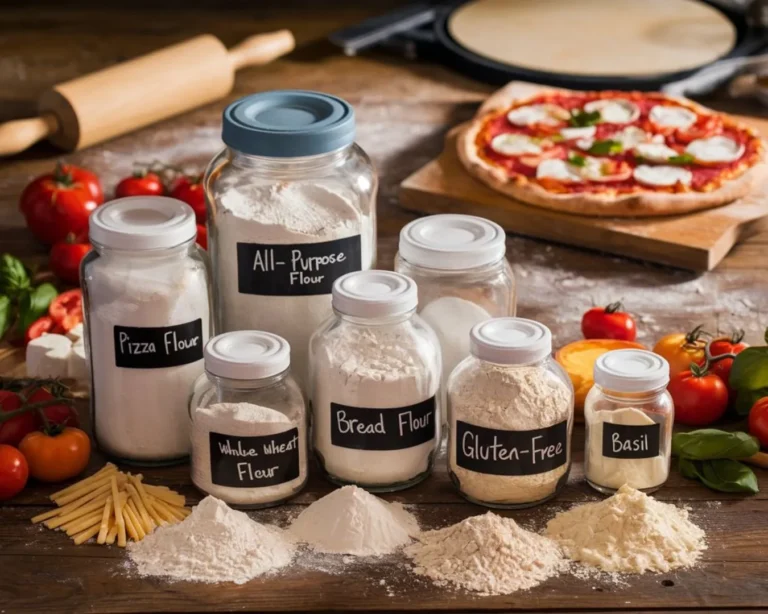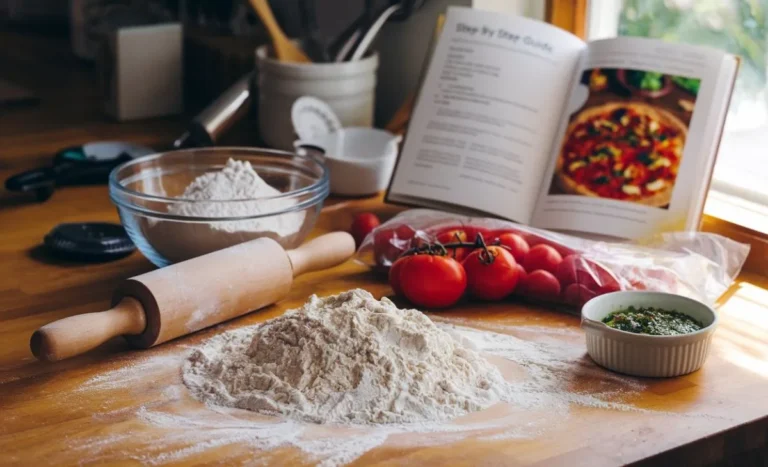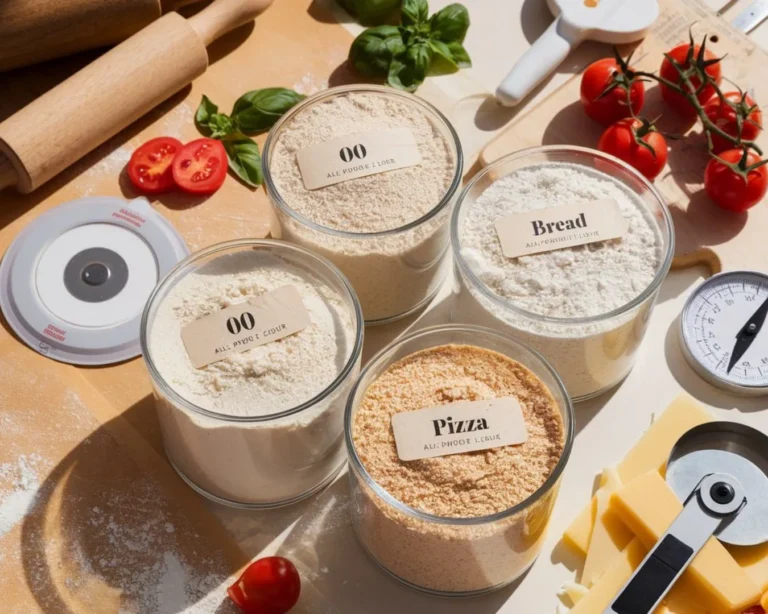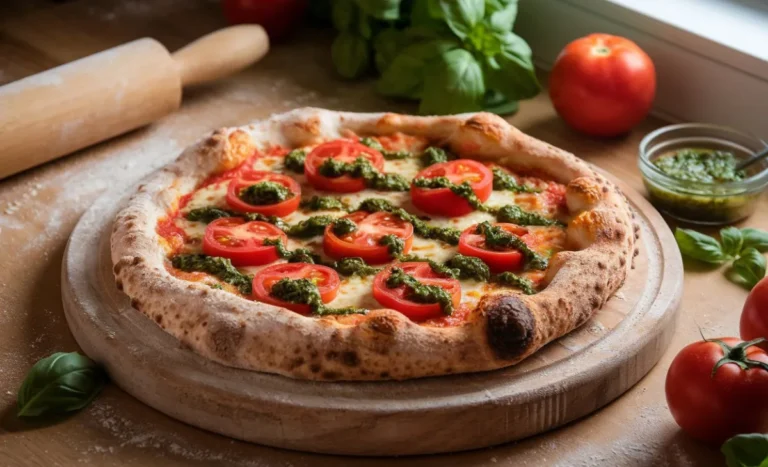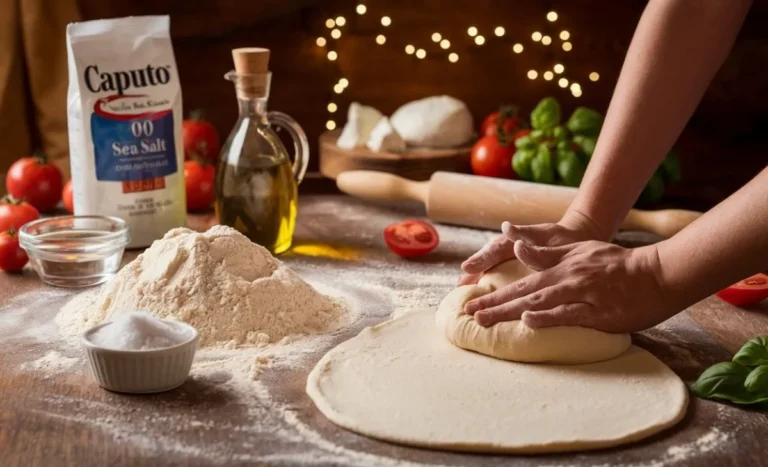How to Choose the Right Pizza Flour for Perfect Crusts Every Time
Introduction: The Importance of Choosing the Right Pizza Flour
Choosing the right pizza flour is crucial if you want to create a perfect crust every time. The texture, flavor, and overall quality of your pizza largely depend on the type of flour you use. With so many options available, it can be overwhelming to know which flour will yield the best results. However, understanding the characteristics of different types of pizza flour can make all the difference in your baking.
For home bakers, selecting the proper pizza flour is not just about convenience—it’s about achieving the ideal balance of chewiness and crispness. The protein content in the flour plays a significant role in how your crust turns out. Higher protein levels lead to more gluten development, giving your crust that delightful elasticity. Therefore, knowing how to match your flour to your desired pizza style is essential.
Moreover, the type of pizza you aim to make—whether it’s a classic Neapolitan or a New York-style pie—affects which flour you should choose. For instance, finely ground 00 flour is perfect for Neapolitan pizzas due to its light, airy texture. On the other hand, bread flour or all-purpose flour may be better suited for heartier, more substantial crusts like those found in New York-style pizzas.
In conclusion, the right pizza flour can elevate your pizza-making game and bring professional results to your kitchen. By carefully considering the characteristics of various flours, you can create a pizza crust that impresses every time. Understanding these details will set you on the path to becoming a pizza crust expert.
Understanding Flour Types: A Quick Overview
Understanding the different types of pizza flour is essential for achieving the perfect crust. Each flour variety offers unique characteristics that affect texture and flavor. Knowing these differences helps you select the best option for your specific pizza style. As a result, your homemade pizzas will stand out and impress your family and friends.
First, let’s discuss all-purpose flour, which is a popular choice among home bakers. This versatile flour has a moderate protein content, typically around 10-12%. It works well for various recipes, including pizza dough. While it can produce satisfactory results, it may not deliver the same level of chewiness as specialized flours. Therefore, consider all-purpose flour for quick and easy pizza nights.
Next, “00” flour is a favorite for Neapolitan-style pizzas. Milled finely, this Italian flour boasts a high protein content of about 11-12%. It creates a light, airy crust that bakes beautifully in high-temperature ovens. Many bakers appreciate its ability to stretch without tearing, resulting in a delightful texture. If you’re aiming for that authentic pizzeria experience, “00” flour is an excellent choice.
Lastly, bread flour is another option worth considering. With a higher protein content, usually around 12-14%, it enhances gluten development. This flour is ideal for creating chewy, hearty crusts, making it perfect for New York-style pizzas. However, it may require some adjustments in hydration levels. By understanding these flour types, you can confidently choose the best pizza flour for your desired crust.
Protein Content: What You Need to Know
Protein content is a critical factor in selecting the right pizza flour for your crust. It directly influences gluten development, which is essential for achieving the desired texture. Different types of flour have varying protein levels, making it crucial to understand how this affects your pizza-making process. By choosing the right protein content, you can create the perfect crust that meets your expectations.
Typically, flour falls into three categories based on protein content: low, medium, and high. Low-protein flours, such as cake flour, usually contain around 7-9% protein. While these flours are not ideal for pizza, they work well for delicate pastries. On the other hand, medium-protein flours, like all-purpose flour, contain about 10-12% protein. This range provides a good balance for various recipes but may not give the best results for certain pizza styles.
High-protein flours, such as bread flour and “00” flour, contain around 12-14% protein. These flours promote excellent gluten formation, which is vital for a chewy and elastic crust. High-protein options are particularly suited for New York-style and Neapolitan pizzas. As a result, using a flour with the right protein content can significantly enhance your pizza’s texture and flavor.
In summary, understanding protein content in pizza flour is key to mastering your pizza crust. By selecting a flour with the appropriate protein level, you’ll achieve the desired chewiness and structure. Whether you prefer a thin, crispy crust or a thick, chewy one, the right choice in flour will elevate your pizza-making experience.

Matching Flour to Pizza Style: Neapolitan vs. New York
Matching the right pizza flour to your desired pizza style is essential for achieving the perfect crust. Different styles, such as Neapolitan and New York, require distinct characteristics in flour to create their signature textures. Understanding these differences will help you make informed choices that elevate your pizza-making skills. By selecting the appropriate flour, you can ensure your crust meets your expectations every time.
Neapolitan pizza is known for its thin, soft crust and airy texture. To achieve this, “00” flour is the preferred choice among bakers. This finely milled Italian flour has a protein content of around 11-12%, which promotes excellent gluten development. As a result, it allows for easy stretching and creates that signature puffed edge. When using “00” flour, you can replicate the authentic experience of traditional Neapolitan pizza right in your home oven.
In contrast, New York-style pizza features a thicker, chewier crust that can hold more toppings. For this style, bread flour is an ideal option due to its higher protein content, typically around 12-14%. This flour provides the necessary strength to support heavier ingredients while delivering a satisfying chew. Many bakers find that using bread flour results in a crust that is both crispy on the outside and soft on the inside, perfect for folding a slice in half.
Ultimately, understanding how to match your flour to your pizza style is crucial for perfecting your crust. Whether you prefer the delicate, airy qualities of Neapolitan pizza or the hearty chew of New York-style, the right pizza flour makes all the difference. By experimenting with different flours, you can refine your technique and create delicious pizzas that impress every time.
Baking Methods: How They Affect Your Flour Choice
Baking methods play a crucial role in determining the best pizza flour for your crust. Different techniques require specific flour characteristics to achieve optimal results. Understanding how your baking method impacts your flour choice can elevate your pizza-making game. By selecting the right flour for your method, you can ensure a perfectly baked crust every time.
For high-heat baking methods, such as using a pizza stone or a wood-fired oven, “00” flour is an excellent option. This finely milled flour allows for rapid cooking at high temperatures, resulting in a light and airy crust. The ability to stretch without tearing is also beneficial when using a hot baking surface. When aiming for that authentic Neapolitan pizza experience, choosing “00” flour will enhance your results significantly.
On the other hand, if you’re using a conventional oven with lower heat settings, bread flour is a better choice. With its higher protein content, bread flour can withstand longer baking times without losing structure. This results in a chewy, hearty crust that holds up well under various toppings. Many home bakers prefer this flour for New York-style pizza, where a thicker crust is desired.
Ultimately, the baking method you choose will influence your flour selection. By considering factors such as temperature and cooking time, you can make informed decisions about the best pizza flour for your needs. Whether you’re baking at high heat or using a conventional oven, matching your flour to your baking method will ensure a delicious and satisfying crust every time.
Testing and Experimenting: Finding Your Perfect Blend
Testing and experimenting with different types of pizza flour is essential for finding your perfect blend. Each flour variety has unique characteristics that can significantly impact your crust’s texture and flavor. By exploring various options, you can discover what works best for your pizza style and personal preferences. This hands-on approach allows you to refine your technique and create pizzas that impress.
Start by mixing different flour types to achieve a custom blend. For example, combining bread flour with “00” flour can create a unique texture that balances chewiness and airiness. This experimentation can lead to delightful results, especially when trying to replicate your favorite pizzeria’s crust. Moreover, documenting your trials will help you remember which combinations worked best for future reference.
Additionally, consider adjusting the hydration level when testing different flours. Some flours absorb moisture differently, which can affect your dough consistency. By experimenting with water ratios, you can enhance your dough’s elasticity and manageability. This will also allow you to adapt your recipe based on the flour you choose, ensuring a successful outcome each time.
Ultimately, the journey to finding your ideal pizza flour blend is a rewarding experience. As you test and experiment, you’ll gain a deeper understanding of how flour types affect your crust. This knowledge will empower you to make confident choices and create delicious pizzas tailored to your taste. Embrace the process, and enjoy the art of crafting the perfect pizza at home!
Conclusion: Elevating Your Pizza Game with the Right Flour
Choosing the right pizza flour is essential for elevating your pizza game. The flour you select directly impacts the texture and flavor of your crust, which is the foundation of any great pizza. By understanding the characteristics of various flours, you can make informed choices that lead to outstanding results. This knowledge empowers you to create pizzas that not only taste incredible but also impress your family and friends.
Experimenting with different flour types allows you to discover what works best for your style of pizza. Whether you prefer a thin, crispy crust or a thick, chewy base, there’s a flour that will help you achieve your desired outcome. Additionally, testing flour blends and hydration levels can lead to unique and delicious results. As you refine your techniques, you’ll gain confidence in your baking abilities and creativity.
Moreover, understanding how factors like baking methods and protein content affect your flour choice is crucial. This insight will enable you to adapt your approach based on the specific pizza you want to create. By aligning your flour selection with your baking method, you can achieve a crust that meets your expectations every time. The right combination of knowledge and experimentation can take your pizza-making skills to new heights.
In conclusion, the journey to perfecting your pizza crust begins with selecting the right pizza flour. Embrace the opportunity to explore various flour types, blends, and baking techniques. With each pizza you create, you’ll gain valuable experience and knowledge. Soon enough, you’ll be crafting exceptional pizzas that will impress everyone at your table.
The Best Types of Pizza Flour: A Comprehensive Guide for Home Bakers


